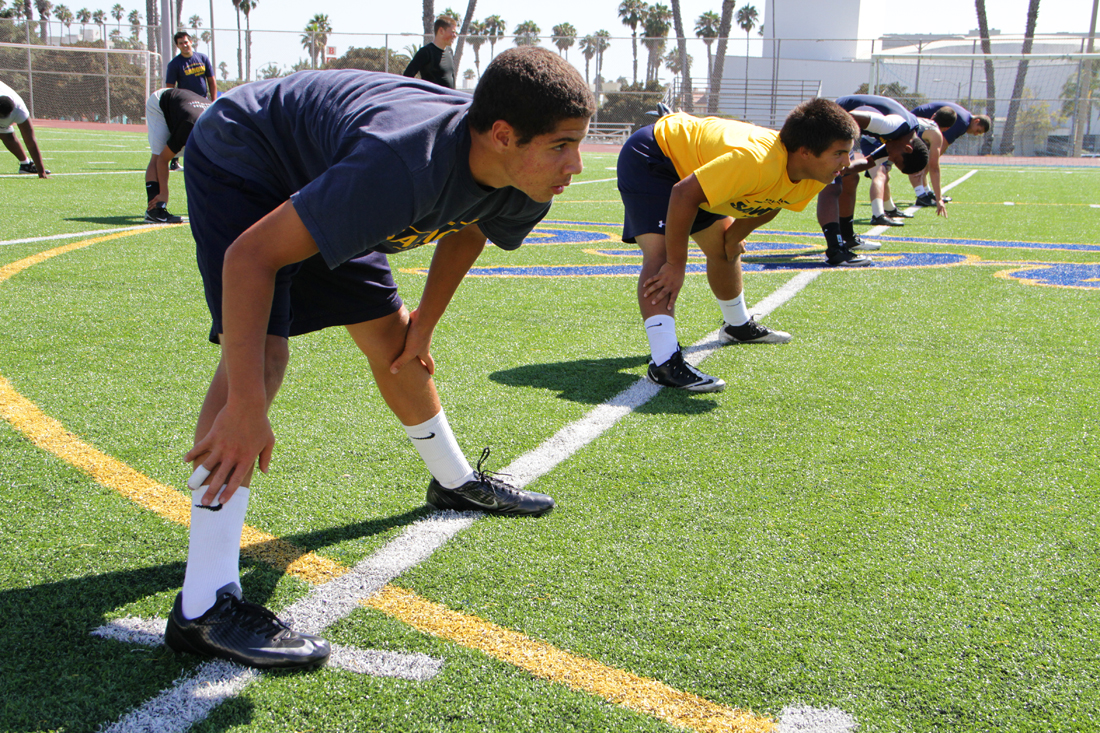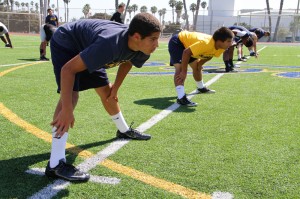
SAMOHI — The field-sharing agreement that gave community members access to the new field at Santa Monica High School is now a year old, and groups are taking full advantage of the new play space, officials say.
The agreement trades access to a plethora of facilities at the high school, including tennis courts, practice gyms and a wrestling room, in return for half of the money raised by Measure Y, a transaction and use tax that voters passed in 2010.
That tax raised almost $6 million last year for the schools, although the prize of the deal — a brand new turf football and soccer field — wasn't available until the end of October.
When the field opened for permitting, groups signed up for 56 percent of the time slots available. By the spring season, which runs from Feb. 6 to June 17, 92 percent of the time was used, said Kathy LePrevost, community recreation manager with City Hall.
Those calculations are based off the time on weekday nights and weekends not already claimed by Samohi teams, which get priority under the agreement.
"We started out a little slower, but we have picked up," LePrevost said.
The lower fall rate may have more to do with circumstances than popularity. This year, the fall season will open up sooner, and LePrevost expects the numbers to increase.
The first organization to snag space on the turf was an adult soccer league, and a variety of others followed suit including youth soccer teams, a municipal elementary and middle school day program, a local lacrosse club and the Santa Monica Rugby Club.
It's been a major boon for the rugby club, a 350-member group which in the past couldn't find lit fields for its adult teams, said Kilian Kerwin, with the club.
"There are two other artificial turf fields. One's at (John Adams Middle School) and only available to youth, and the other is at Airport Park," Kerwin said.
Adult soccer teams often get the use of the Airport Park, leaving the rugby players to find fields in Los Angeles for their practices, he said.
"It's great, it opens up more space for the community that we desperately need," Kerwin said.
Kerwin even had compliments for the permitting process, which he describes as better organized than any other municipality he's worked with.
"It's not an enviable job, and they do a really good job of facilitating," Kerwin said. "They have a lot of people making demands and they juggle it in a fair, and equitable fashion."
The most demanded times start at 7 p.m. and 8 p.m. on weekdays when professionals have gotten out of work and can make it to practice, said Carey Upton, director of theater operations and facility permits with the Santa Monica-Malibu Unified School District.
Try getting a permit for a Friday night, Saturday night or on a long weekend and you'll have more luck, he said.
The program had a steep learning curve at its outset, made more difficult by the success of both the Samohi football team and marching band.
The team made it to the semifinals and the band went all the way to the championships, stretching the need for the field beyond what City Hall expected.
While the permitting officials and other sports teams were flexible and made it work, school teams are still having difficulty conforming to the new procedures, which require them to sign up for field use long in advance of what they're used to.
"The challenge we're still having is adapting the school to making sure the city knows in a timely enough fashion … what the school's needs are," Upton said.
Neither the district nor City Hall can control a larger issue, a hold on the $57 million meant to improve the very facilities that the two entities are now sharing.
The money was to be used in a Redevelopment Agency project, an entity that paid for capital improvement projects throughout the city.
That entity was dissolved by the state Legislature, and officials from the state Department of Finance said that contracts for the campus improvements had been signed one day too late to reserve the money.
Although unfortunate, it won't impact the agreement between the district and City Hall, Upton said.
"In the agreement, we anticipated additional use being available for the city as new facilities came online," Upton said. "If those never come online, it will remain as it is."
ashley@www.smdp.com








